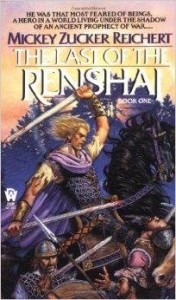A Guest Post by Gama Martinez
There are writer conventions and conferences all over the country. Most are small with one or two big guests. Others are large with many more guests, but these often have so many attendees that it’s nearly impossible to have a meaningful conversation with anyone. There are a few conferences where the attendee is low and the number of big names is high. The cost to attend these, however, can be hundreds of dollars. Add to that the cost of travel and lodging if it’s not local, and it becomes unfeasible for many to attend these. In this kind of environment, Life, The Universe, and Everything stands out.
LTUE is a relatively small convention in Provo, Utah, an hour south of Salt Lake City. Largely because of the high concentration of scifi and fantasy authors in Utah, many big name authors attend. Brandon Sanderson, Dave Wolverton, Dan Wells, Larry Correia, and Howard Tayler are regular attendees. Previous keynote speakers have included Orson Scott Card and James Artimus Owen. Additionally, the even draws a number of agents and editors, enough that pitch sessions are a regular feature, something that normally only happens at larger, more expensive conventions. It’s more a writing convention than anything else, and as a result, you get to hear some of the top names in the industry talk about topics that they specialize in.
This being a writer’s convention, there are plenty of writers of all skill levels so not only does it provide the opportunity to learn from more experience writers by also to network with writers at a similar skill level as you. The convention ends on Saturday with a banquet which, by itself, provides fantastic networking opportunities as well as a speech by the keynote speaker.
I’ve mentioned cost. In spite of having so many well-known authors, the price of LTUE is comparable to many smaller local conventions with the price ranging from $55 at the door to only $40 for early bird registration. The convention hotel is relatively affordable as well, only $99. There are other, less expensive hotels in the area as well if that one doesn’t suit. With a little careful budgeting, you can get your hotel, registration, and most of your meals for less than the cost of registration at conventions like WorldCon. In fact, when I lived in Dallas, there was a conference that provided a similar worth, but the cost was so high that it was about the same price as flying to Utah and paying for my hotel. Given with the amount of information and networking opportunities makes LTUE have one of the highest cost to benefit ratios of any convention I’ve been to.
The next Life, the Universe, and Everything takes place February 11-13th in Provo, Utah. It’s one of my favorite conventions, and if you can make it there, you should.
Guest Bio:
Gama Martinez lives near Dallas and collects weapons in case he ever needs to supply a medieval battalion. He greatly resents when work or other real life things get in the way of writing. Other than writing, he does normal things like run from bulls and attempt to leave the Earth to be a Martian colonist. His trilogy, The Oracles of Kurnugi, is available now. Shadowguard, the first book in a seven book series, will be released September 22.


 When asked to do this post, a couple of things came to mind. I could’ve written about how a trip running for the bulls turned out to be the beginning of a friendship with someone, or about how I once managed to get away with stealing a test in high school even though every shred of evidence said I’d done it. I almost wrote about the time I nearly poisoned myself with peanut butter. I finally settled on the time I got attacked by a swarm of perfectly harmless African lake flies.
When asked to do this post, a couple of things came to mind. I could’ve written about how a trip running for the bulls turned out to be the beginning of a friendship with someone, or about how I once managed to get away with stealing a test in high school even though every shred of evidence said I’d done it. I almost wrote about the time I nearly poisoned myself with peanut butter. I finally settled on the time I got attacked by a swarm of perfectly harmless African lake flies. Guest Writer Bio:
Guest Writer Bio: 
